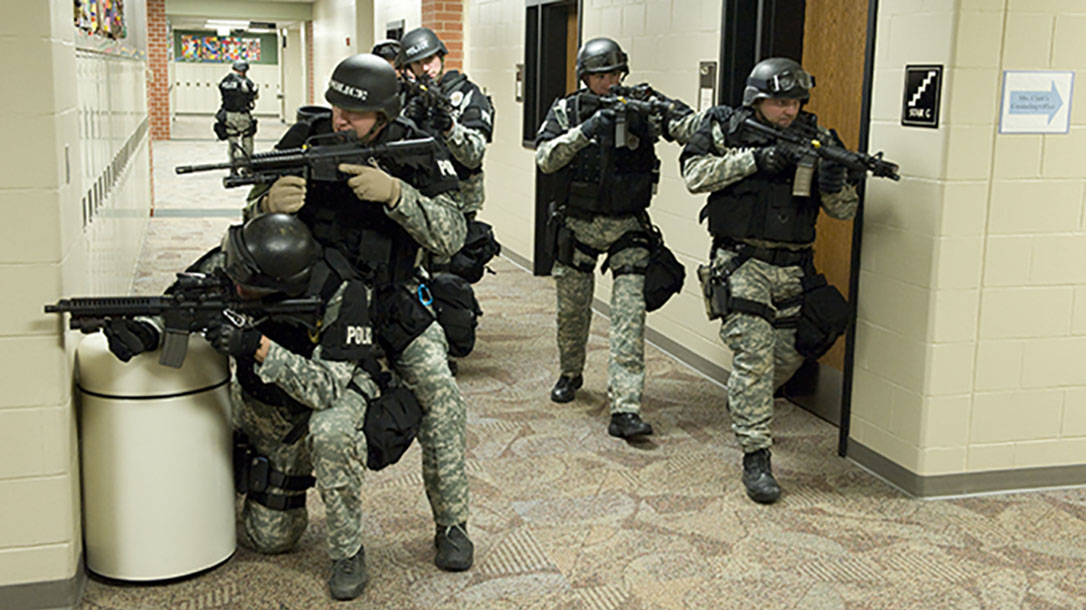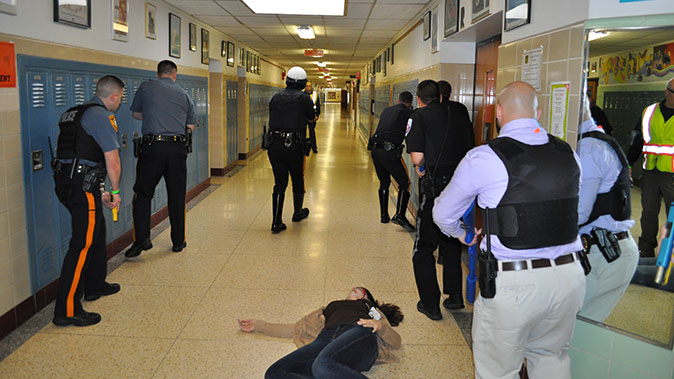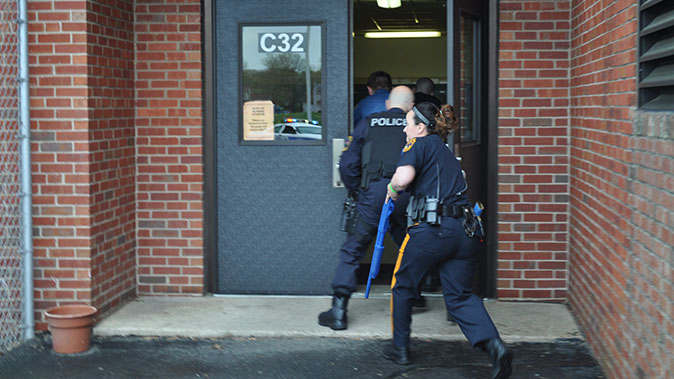Active shooter incidents, particularly in schools, have shown some startling similarities and part of active school shooter training for law enforcement requires comparing the traits of many of the horrific events. Several studies have been conducted to try to determine what makes an active shooter tick and compels them to act. The Secret Service’s “Safe School Initiative” came away with 10 key findings of what it calls acts of “targeted violence,” most of which are transferable to any active shooter scenario.
The study found:
Advertisement — Continue Reading Below
1. Incidents of targeted violence were rarely sudden, impulsive acts.
2. Prior to most incidents, other people knew about the attacker’s idea and/or plan to attack.
3. Most attackers did not threaten their targets directly prior to the attack.
Advertisement — Continue Reading Below
4. There is no accurate or useful “profile” of students who engaged in targeted school violence.
5. Most attackers engaged in some behavior prior to the incident that caused others concern or indicated a need for help.
6. Most attackers had difficulty coping with significant losses or personal failures. Moreover, many had considered or attempted suicide.
Advertisement — Continue Reading Below
7. Many attackers felt bullied, persecuted, or injured by others prior.
8. Most attackers had access to, and had used, weapons prior to the attack.
9. In many cases, other students were involved in some capacity.
Advertisement — Continue Reading Below
10. Despite prompt law enforcement responses, most shooting incidents were stopped by means other than law enforcement intervention.
More Active School Shooter Training
At an International Law Enforcement Educators and Trainers Association (ILEETA) conference, then-Chief Jeff Chudwin of the Olympia Fields, Illinois, Police Department outlined a patrol response to a mass killing event. “You have to have the mindset ready to respond immediately to these types of attacks…this will be a fight by the patrol officer in the first minutes of the attack,” Chudwin said. “This type of incident is going to be settled in the first 20 minutes, and it’s going to be affected by patrol. The event may still be ongoing, but by responding quickly, the severity of the attack can be seriously mitigated.”
Advertisement — Continue Reading Below
Chudwin also laid out four more points to bear in mind for active school shooter training in addition to the Secret Service’s Safe School Initiative:
11. There likely won’t be a specific warning ahead of time.
12. A failure to immediately and effectively fight will result in innocents dying.
Advertisement — Continue Reading Below
13. A lack of preparation and training ensures failure.
14. A lack of command and leadership inspires failure.
Hardening Targets
Often underappreciated is the art of target hardening, or making a location as impenetrable as you reasonably can. Unfortunately, in a school, this is difficult because the needs for a conducive educational environment can seem to conflict with the need of a secure one.
Advertisement — Continue Reading Below
Bad guys also look for easy prey. That is why all target hardening should focus on the key elements of deterring, delaying, and disrupting an attacker’s flow. Deterrence starts beyond a building’s walls. It starts by sending a message that getting inside is almost impossible. You have to send a message and present a picture of impenetrability.
Delaying starts and ends with controlling access. No one should have free reign to go into and out of a building, and anyone entering should be known. These days, technologies exist that can perform an automated criminal check when a driver’s license is produced and only grant access after that check is completed.
Disruption commences from the point of entry until the threat is eliminated. In the case of buildings, disruption includes locked doors, effective communications, sound and light diversions, and impediments that force an attacker to adjust.
Advertisement — Continue Reading Below
In the aforementioned active school shooter training, the “attacker” encountered a locked door—a deterrent. They focused on breaching the door, delaying them. This led to the “attacker” not seeing the assault team coming, resulting in a quick threat neutralization, or disruption. All of this came from simply locking a door.
Active School Shooter Training Takeaways
One of the first points realized during an active school shooter training held by the Lower Makefield Police Department (LMPD) in Pennsylvania was the need for command. Without it, nothing else matters. The command must be effective, cohesive, and coherent to increase the command effectiveness of an incident response. That command could be a lone officer taking charge or the chief showing up on the scene. Regardless, someone needs to take charge of the scene and direct assets with the overall scene in mind.
Then-Chief Ken Coluzzi of the LMPD, who spent the earlier part of his career running the Philadelphia Police Department’s homicide unit, was the host of this drill. Coluzzi said, “Events occur quickly and can also devolve quickly. It’s imperative that once law enforcement arrives on the scene, they act effectively but quickly to thwart further damage. This means making decisions rapidly and having those decisions come from one point.”
Once you have command, the direction of the response is the next critical part of a plan. Either from a prearranged or on-scene process, developing a plan, no matter how rudimentary, is a necessity. One of the tools that can help is having access to the building’s blueprint, which would make direction easier. These could be located in an office, on a laptop, or in a locked box outside the building. Regardless, the incident commander needs to clearly understand where to send officers and how to secure the scene.
Then-Lieutenant Jason Braim, the coordinator of the drill, said, “The most important thing I think we learned today was that having situational awareness and realistic training is key, and doing this type of coordinated training gives us a chance to see what works and what doesn’t, which will help us better prepare for when we have to respond.”
Communications are absolutely critical. Then-Captain Bob Lewis of the LMPD said, “We try to train and teach our folks that once you arrive on the scene, someone must take charge not only of the scene but of the communications and become the ‘comm link’ for all of the responding units. This will enable the response to be better coordinated and effective.”

Working Together
If an active shooter incident happens, it quickly becomes larger than just a police matter, which became apparent during the drill as representatives from the school district, fire department, other police departments, and emergency medical units were on hand.
Coluzzi said, “In reality, the police are only part of the response. You’ll need all these other community entities there in supporting functions to handle the tertiary issues that the police don’t have the expertise or time to handle.” The chief continued, “The best way to handle an incident like this is to teach, train and coalesce all the emergency response entities. Once you’ve done those three things, you’ve taken a great step to target hardening your own community.”


























